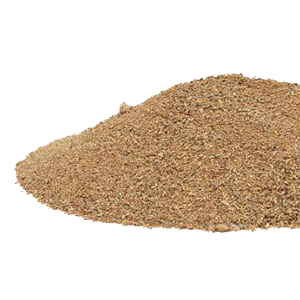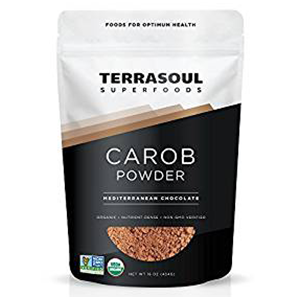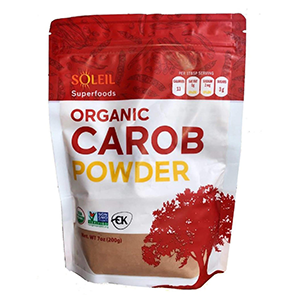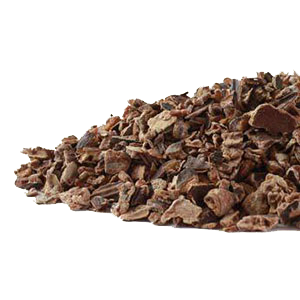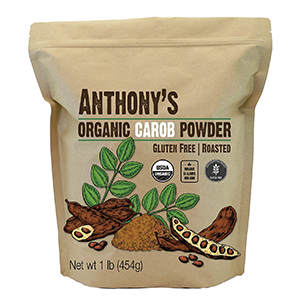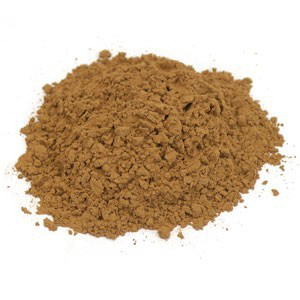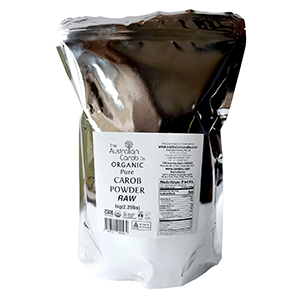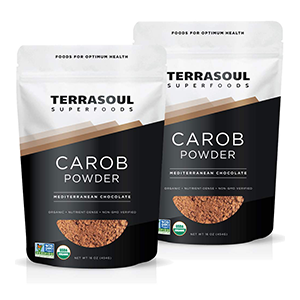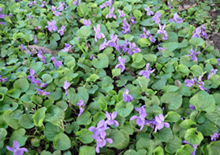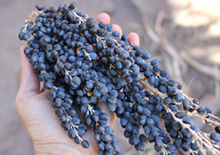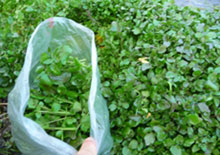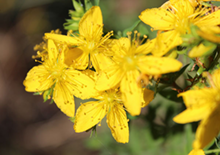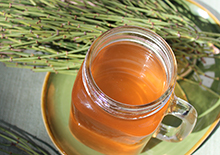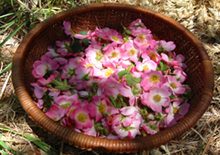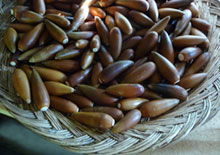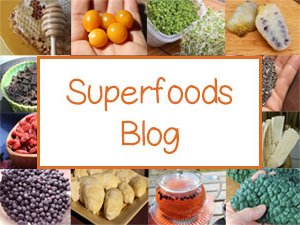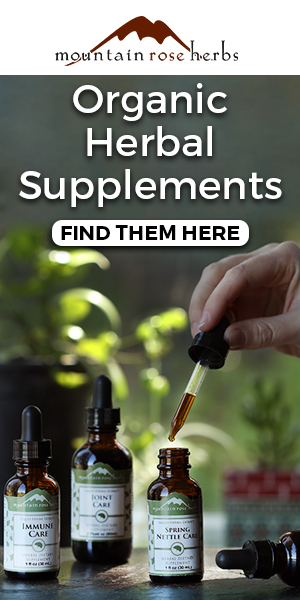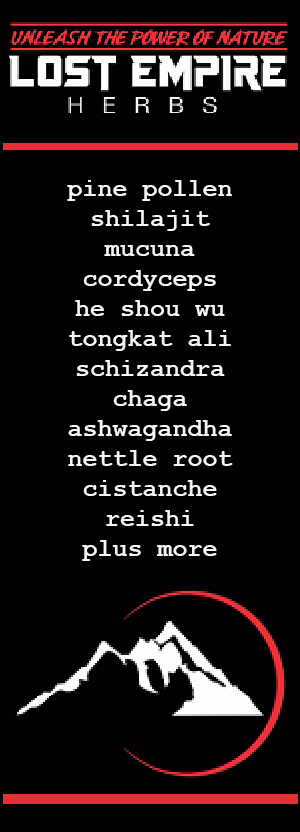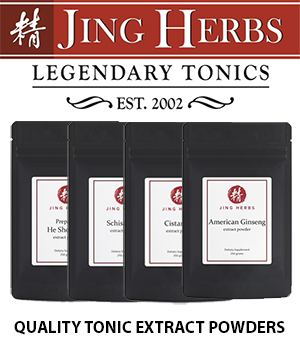- Home
- Wild Plant Foods
- How to Make Carob Powder
How to Make Carob Powder From Whole Carob Pods
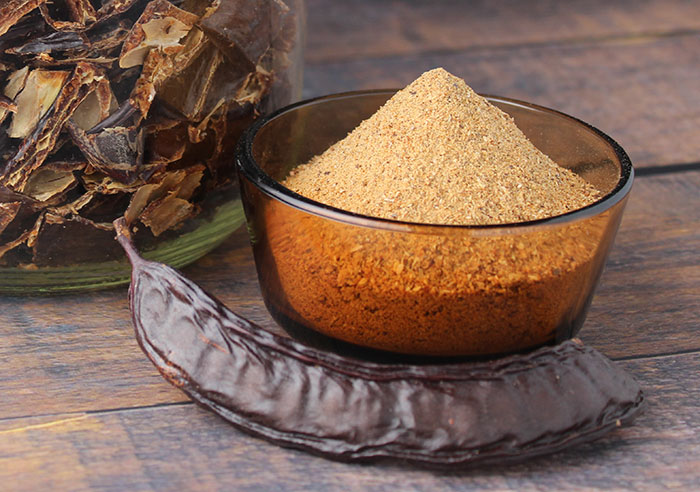
Want to learn how to make carob powder from harvested tree pods?
When most carob pods are fresh, they have a soft breakable texture. You can actually bite into them.
However, for transforming the pod into a fine flour-like powder you will need to remove the non-edible seeds. For one pod you will have approximately 10-15 seeds, or about 10% of the total pod by weight.
These are also called "locust beans", commonly used in the food industry
to make locust bean gum, a type of thickening agent or emulsifier present in many
commercial food products like ice cream.
Can you make your own locust bean gum from harvested carob pods? The answer to the question, according to our research, is No, at least not easily. The steps for processing the seeds into a locust gum powder requires acid treatment to de-skin the seed and then undergoes a milling process that usually involves intensive factory equipment to produce a final powder suitable for use in recipes like homemade ice cream.
Process for Making Carob Powder
The most time-consuming part of making carob powder from whole pods is separating the seeds from the pulp material. This is commonly referred to commercially as "kibbling".
When doing this by hand, we have experimented with three main approaches.
1) Soaking the pods overnight in pure water and then cutting open.
2) Cracking the pods open with a blunt object (like a kitchen mallet) on a hard surface.
3) Boiling the pods then slicing open.
If your interested in making a RAW carob powder, however, by far the EASIEST way to get those seeds out is by SOAKING the whole pod first. This creates a softer texture so you can slice them open and remove the inner seeds.
Once the seeds are separated from the carob pod fiber, the two essential items for making carob powder without the use of heat are a food dehydrator and a high-speed blending device.
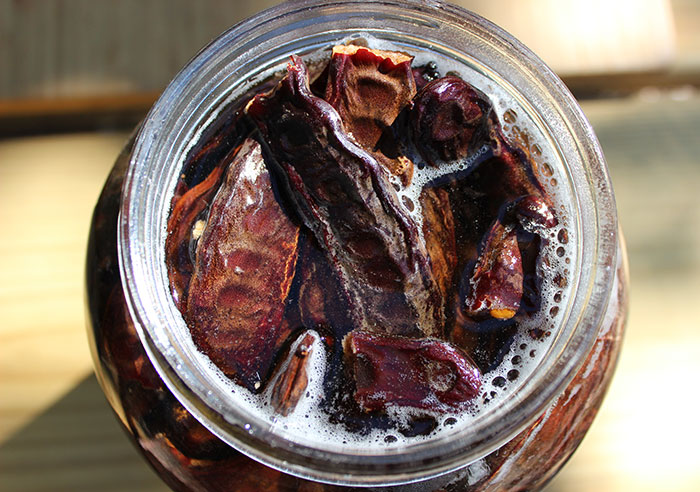
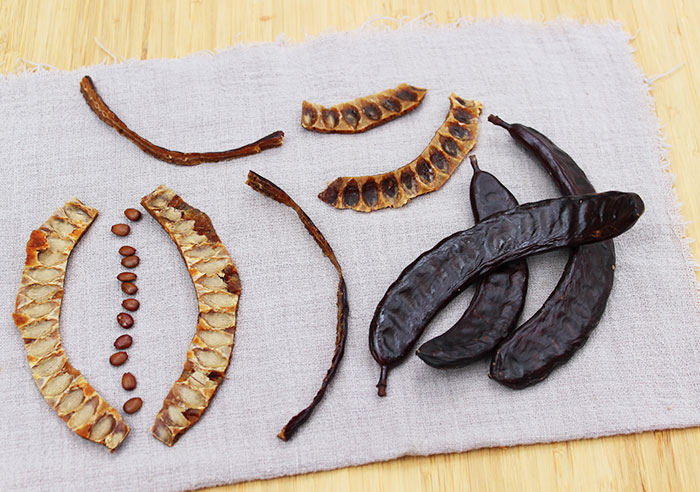
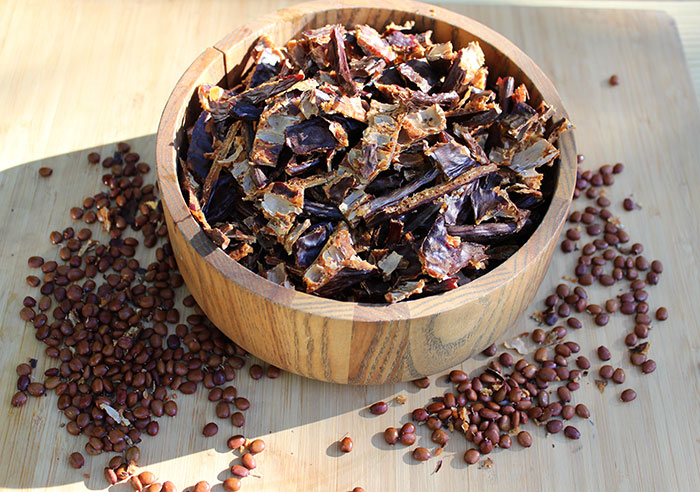
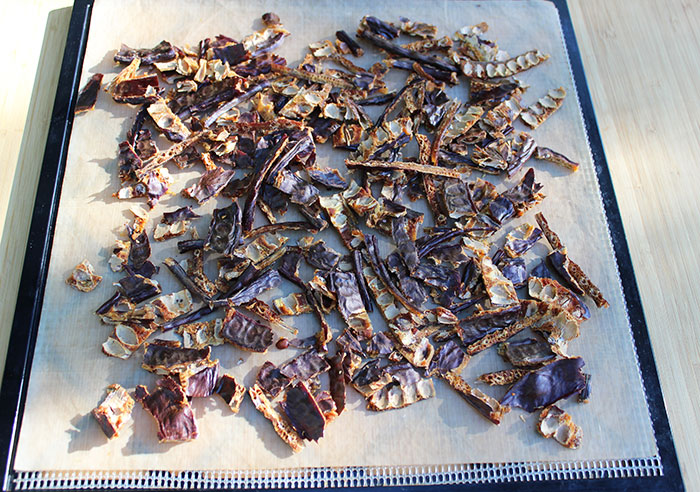
How to Make Carob Powder - The Steps
Separating the Seeds:
- Harvest your carob pods from a clean environment.
- Rinse off the pods in pure water to remove any dirt or debris.
- Take a gallon glass jar and fill it up with pods going in a vertical direction.
- Fill up the jar with pure water and 2T food-grade hydrogen peroxide to remove any potential mold.
- Place a lid on the jar and shake around a bit.
- Allow to soak overnight.
- The next day, strain out water and rinse the pods one more time.
- Place soaked and strained whole pods in a bowl with two other bowls beside you: one for collecting pulp and other as a "discard bowl" (seeds and end pieces).
- With a dull serrated or paring knife, cut off both ends and then the sides. (Side pieces can be used for powder.)
- Slice the carob pod vertically to open the pod up and release the seeds that run down the middle.
- This process might feel a bit awkward at first but over just a short amount of time you will develop a rhythm, much like native peoples preparing mass quantities of wild foods.
Dehydrating the Pod Pieces:
- Once the seeds are removed, place the pod pieces on a dehydrator screen with a sheet (so smaller pieces don't fall through).
- Break up the larger pieces and spread out flat on the dehydrator sheet.
- Dehydrate until dry, usually about 8 hours on low-medium temperature setting is adequate. It is important for pod pieces to be completely dry to make a smooth powder.
- It is a good idea after dehydrating to check for any loose seeds, which may become more visible when dried. We always find at least one or two we've missed.
How to Make Carob Powder:
- Now that you have your dried de-seeded carob pieces you are ready to make your raw carob powder. To do this place 1-2 cups of pieces into a high-speed blending device.
- Turn on highest speed setting and the pieces will quickly grind down into a fine flour-like consistency.
- You can store the powder in an air tight jar with a desiccant packet to help preserve texture.
- Or, for a very fine powder you might choose to place through a fine mesh colander for flour sifter.
Notes on Roasting: If you'd like roast your carob for added flavor, this is achieved by placing the pieces in a pan over low-flame and browning them slightly. Then allow to cool and proceed with the grinding process.
Our Carob Pod to Powder Measurements
Here's our math summary. These measurements are of course not exact, but can give you an idea of about how many carob pods it takes to make a certain amount of powder.
2 Gallons - whole fresh carob pods
Equals
1 Gallon - dehydrated dried pieces
Equals
16 Cups - dehydrated dried pieces
Equals
8 Cups - carob powder
The approximated end equation being that a two gallon glass jar packed with whole carob pods equals 1 gallon of dried pieces which will yield roughly about 8 cups of powder. Another simple break down would be: 2 cups of dried pieces yields about 1 cup of carob powder.
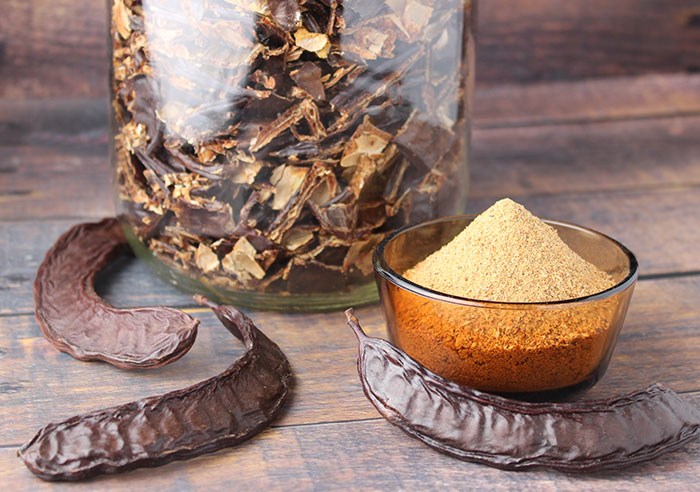
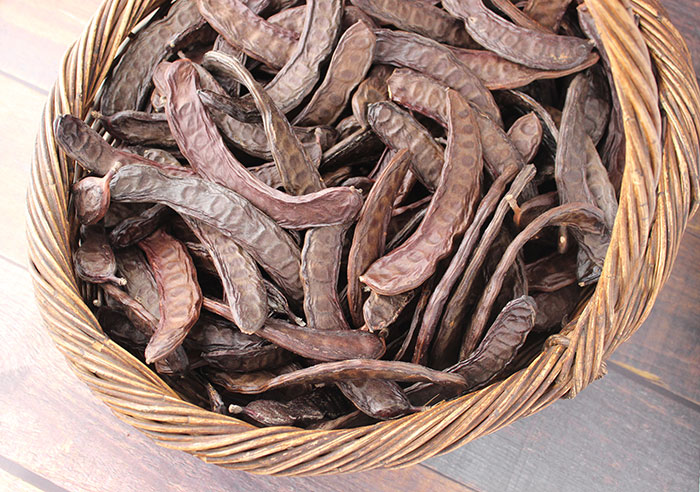
Harvesting Carob Pods
Like many foraged foods, there is often quite a lot of labor involved to create something that you can easily purchase for much less effort at any food market. However, there is something to gathering wild foods that we really enjoy and cherish. An element of satisfaction as well as a complete intimate experience with the food itself. Often times these foods are also substantially higher in flavor and nutrient quality.
Carob trees grow all over the state of California with its Mediterranean-like climate. We actually harvested these pods in the winter season when visiting a wild desert park located near Palm Springs, CA. It rarely rains in this area of the world but one day there was decent rainfall. The day after a big wind storm blew all the many ripe pods to the ground below. We went hiking to the carob tree location the next day and collected a very large sack full without ever having to climbing the tree or use a ladder. It was the perfect harvest!
Precautions:
Carob is relatively safe to consume for most people. Generally, we recommended consulting your healthcare advisor if pregnant, nursing, taking prescription medications or if you have a serious medical condition.
Shop Related Products (About Affiliates & Amazon Associate Paid Links)
Affiliate Disclaimer: This section contains affiliate product links. If you make a purchase through our recommended links, we receive a small commission at no additional cost to you. Thanks for the support.
